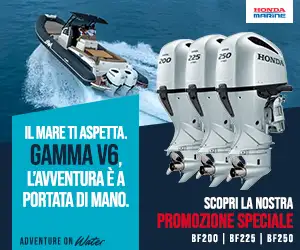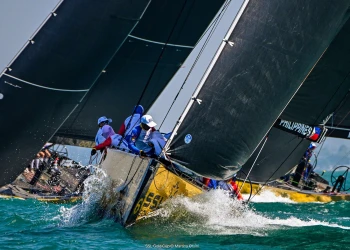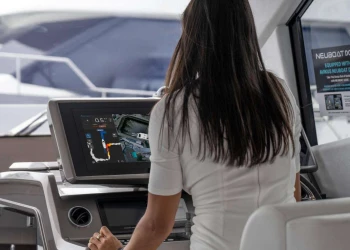
Reflections on: Yacht Design, Marketing, Craft and Market
Yacht Design between marketing, craft, and market: evolution or misdirection?
Have you ever stopped to compare the “narrative” of yacht designers' works with the actual boats that are built? I have, because, for better or worse, I am one of them, and I must address this issue—if only for intellectual honesty.
The conclusion I have reached is that, generally speaking and with a few commendable exceptions, there is a significant gap between the story told and the final product. It’s as if the objective is clear, but the execution stops halfway, or, more simply, the vision gets lost along the way. At best, excluding cunning, calculation, and bad faith, we often see beautiful projects poorly executed. Let’s analyze the causes.
First, it must be said that a yacht is such a complex product that transforming an excellent idea into a well-executed final product is an extremely long and intricate process. More often than not, the original idea gets diluted through the countless compromises that must be made.
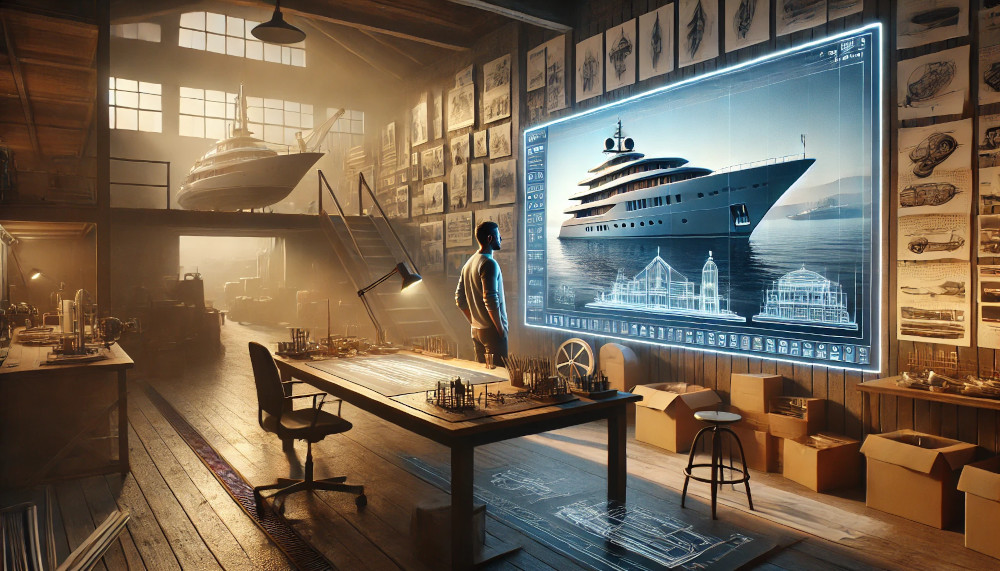
If the sole objective is to create a technically and functionally sound product that meets the client’s specifications, there is still hope of achieving it. This is mostly true, however, for professional vessels—fishing boats, tugboats, military ships, ferries, etc.
In the yachting industry, we face an additional challenge: the increasingly dominant role of marketing, which, since the 1980s, has blurred the vision of both designers and shipyards.
In theory, according to professionals in this noble discipline, marketing should clarify project objectives and give substance to abstract concepts such as target audience, brand positioning, and family feeling. However, regardless of their good intentions, the reality is that the indisputable certainties of strategic marketing—demanding "visibility and distinction" for products entering the market—are the first to undermine functionalist designers. These professionals quickly adapt to the new trend, dressing their projects with graphics and design elements reminiscent of the extravagant fins on 1950s Cadillacs and Pontiacs.
Thus, we see "futuristic" solutions appear—only to vanish a year later—such as gull-wing doors, massive roll bars, serpentine moldings, and hull windows in various shapes and sizes. The sole purpose of these elements is, as mentioned earlier, to give the product an "identity" and help it "stand out" from the background noise, striving for an instantly recognizable "style." This is often done by copying current trends and fads without any guiding thread or coherence with the real needs of the end user.
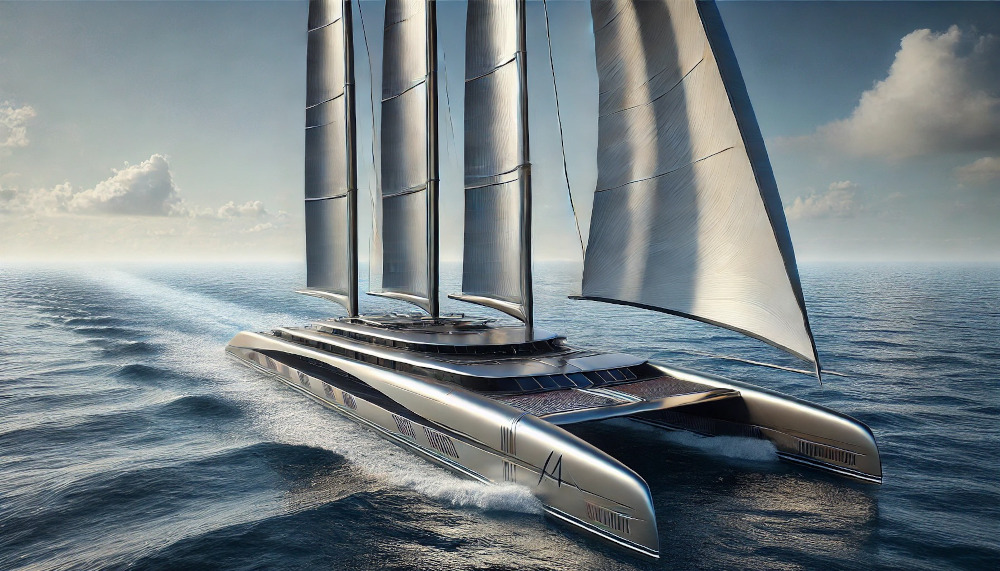
Further complicating the picture is another widespread belief in contemporary yacht design: that sales success is primarily driven by volume and "habitability." (On yachts up to 20 meters, bed count matters; beyond that, sofas dominate.)
This aspect has become so "strategic" that, understandably, interior layout and decor are increasingly entrusted to specialists in furnishings and interior design. These experts often work in complete autonomy, disregarding proportions, overall harmony, and naval architecture. After all, performance can be ensured with ever more powerful propulsion systems, stability is managed by gyroscopes, and to reduce fuel consumption, we load tons of batteries to allow two hours of sailing at 5 knots.
Conversely, "inspired" designers—those who have a clear character and a formal idea of the yacht—if authoritative enough, impose their concepts (usually summarized in a few highly "poetic" sketches or renderings) on shipowners and shipyards eager for quick notoriety. Due to a lack of culture and specific expertise, these clients often accept the ideas uncritically, forcing naval engineers, system designers, and technical offices to perform feats of engineering acrobatics just to comply with classification standards or, more simply, to ensure the vessel floats properly.
One might ask: how is it possible that today, with the enormous capabilities of digital design tools and predictive computational power, we struggle to achieve what master shipwrights and boatbuilders managed to do for centuries almost "by eye"?
It’s a legitimate question, and the answer is simple: what’s missing is TIME! Not the time required to complete a project, but the time for reflection and refinement of ideas and experiences.
In the last fifty years, yachts have been “consumed” too quickly. The enormous technical advancements—often bringing with them a natural evolution of form—have not had time to settle because companies have felt the need (or the opportunity) to churn out “novelties” at a frantic pace. In doing so, they have burned through not only massive financial resources but also many great ideas that never had the time to mature into viable products.
This relentless pursuit of novelty creates two paradoxes: on one hand, a widespread homogenization of solutions and shapes, which, merely because they gained market approval faster than others, have become accepted as “right,” or in some striking cases, even “revolutionary.” Yet they are quickly replaced by the next season’s revolution. On the other hand, a concentration of technical and formal solutions in the hands of a few highly structured design studios, leading brands with vastly different market approaches and business models to adopt the same design features and construction techniques.
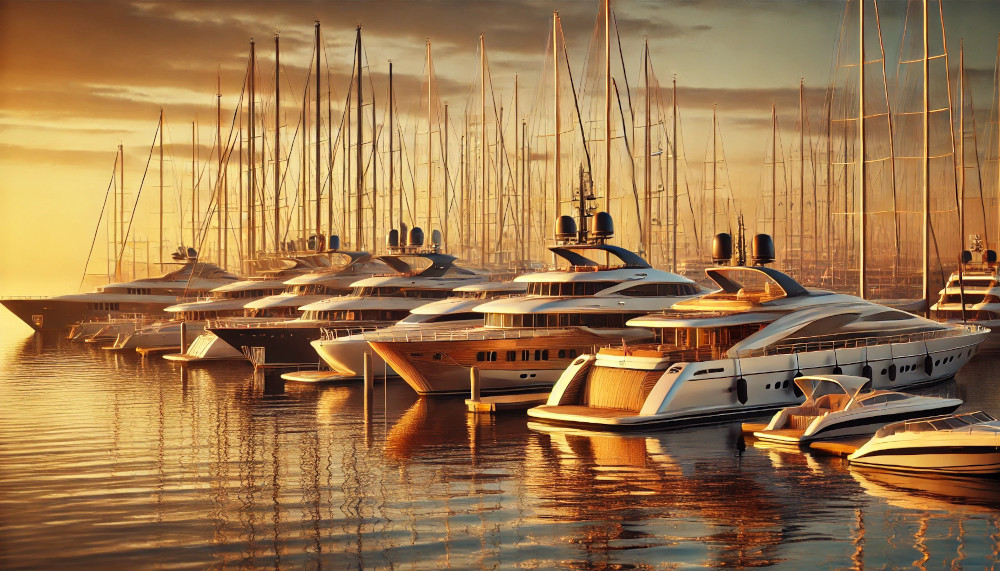
This standardization of taste and working methods has gone hand in hand with the obsessive repetition of stylistic elements treated as indisputable “totems,” even when removed from their intended context and function.
For example, think about concepts like reverse bows, hardtops, wide-body designs, open sterns, twin rudders, etc. None of these ideas are inherently good or bad, but they should be analyzed, considered, and applied in relation to the overall project, the intended use, the characteristics of the owner, the operational environment, and the expected lifespan of the yacht. In my view, they should coexist with many other time-tested design solutions that remain highly functional for different types of usage.
In conclusion, once again, the grand proclamations of innovation and distinction do not align with actual production realities and the real solutions implemented by shipyards. Most importantly, they fail to address the diverse needs of an audience that, in turn, struggles to articulate clear demands and real necessities.
In other words, as Voltaire once said: “If you want to converse with me, first define your terms.”
Or, as my kids say when I try to convince them without conviction: “Dad, what are we even talking about?”
©PressMare - All rights reserved
